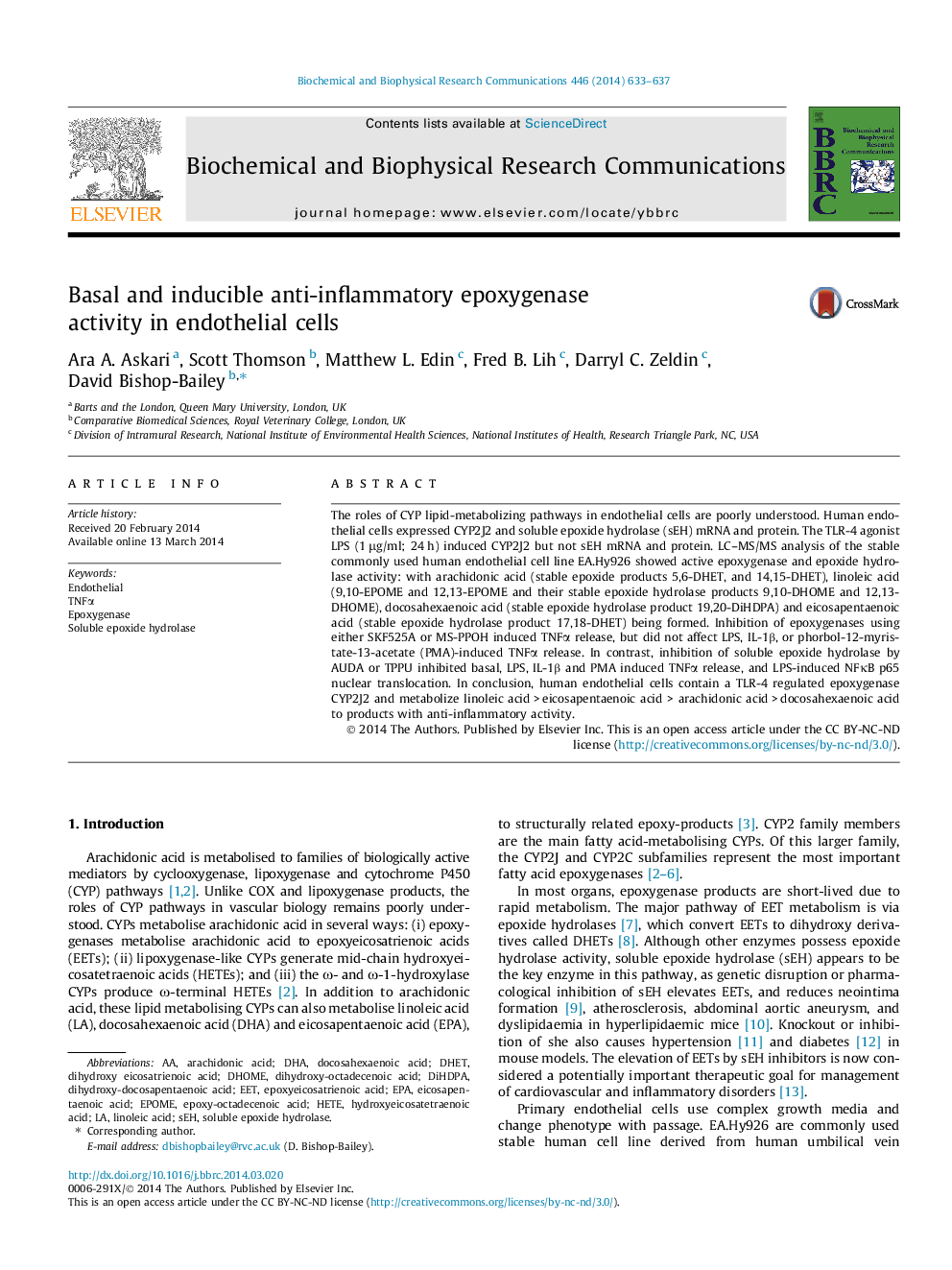| کد مقاله | کد نشریه | سال انتشار | مقاله انگلیسی | نسخه تمام متن |
|---|---|---|---|---|
| 10755826 | 1050377 | 2014 | 5 صفحه PDF | دانلود رایگان |
عنوان انگلیسی مقاله ISI
Basal and inducible anti-inflammatory epoxygenase activity in endothelial cells
ترجمه فارسی عنوان
فعالیت پایه و التهابی اپوکسی گیناز ضد التهابی در سلول های اندوتلیال
دانلود مقاله + سفارش ترجمه
دانلود مقاله ISI انگلیسی
رایگان برای ایرانیان
کلمات کلیدی
موضوعات مرتبط
علوم زیستی و بیوفناوری
بیوشیمی، ژنتیک و زیست شناسی مولکولی
زیست شیمی
چکیده انگلیسی
The roles of CYP lipid-metabolizing pathways in endothelial cells are poorly understood. Human endothelial cells expressed CYP2J2 and soluble epoxide hydrolase (sEH) mRNA and protein. The TLR-4 agonist LPS (1 μg/ml; 24 h) induced CYP2J2 but not sEH mRNA and protein. LC-MS/MS analysis of the stable commonly used human endothelial cell line EA.Hy926 showed active epoxygenase and epoxide hydrolase activity: with arachidonic acid (stable epoxide products 5,6-DHET, and 14,15-DHET), linoleic acid (9,10-EPOME and 12,13-EPOME and their stable epoxide hydrolase products 9,10-DHOME and 12,13-DHOME), docosahexaenoic acid (stable epoxide hydrolase product 19,20-DiHDPA) and eicosapentaenoic acid (stable epoxide hydrolase product 17,18-DHET) being formed. Inhibition of epoxygenases using either SKF525A or MS-PPOH induced TNFα release, but did not affect LPS, IL-1β, or phorbol-12-myristate-13-acetate (PMA)-induced TNFα release. In contrast, inhibition of soluble epoxide hydrolase by AUDA or TPPU inhibited basal, LPS, IL-1β and PMA induced TNFα release, and LPS-induced NFκB p65 nuclear translocation. In conclusion, human endothelial cells contain a TLR-4 regulated epoxygenase CYP2J2 and metabolize linoleic acid > eicosapentaenoic acid > arachidonic acid > docosahexaenoic acid to products with anti-inflammatory activity.
ناشر
Database: Elsevier - ScienceDirect (ساینس دایرکت)
Journal: Biochemical and Biophysical Research Communications - Volume 446, Issue 2, 4 April 2014, Pages 633-637
Journal: Biochemical and Biophysical Research Communications - Volume 446, Issue 2, 4 April 2014, Pages 633-637
نویسندگان
Ara A. Askari, Scott Thomson, Matthew L. Edin, Fred B. Lih, Darryl C. Zeldin, David Bishop-Bailey,
